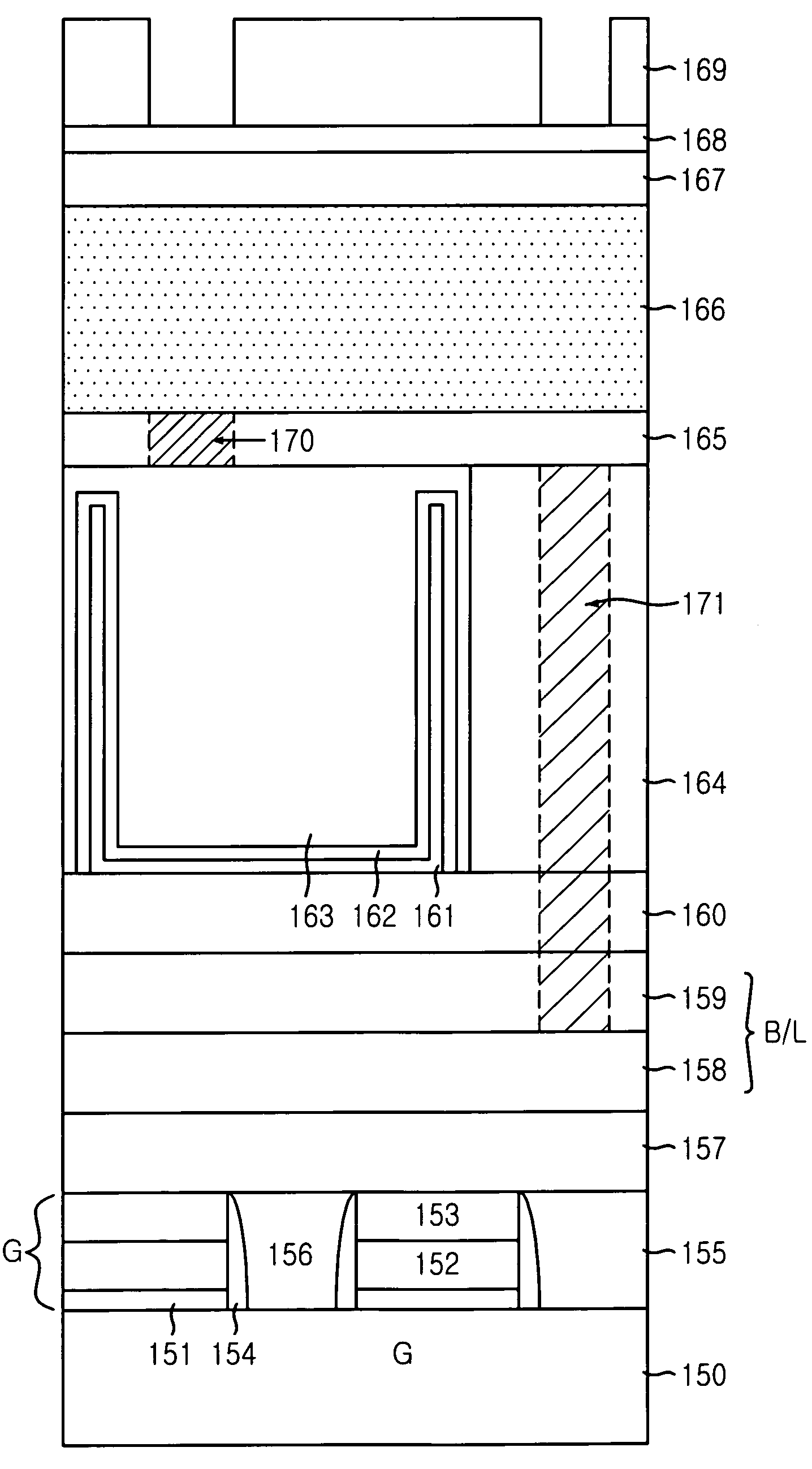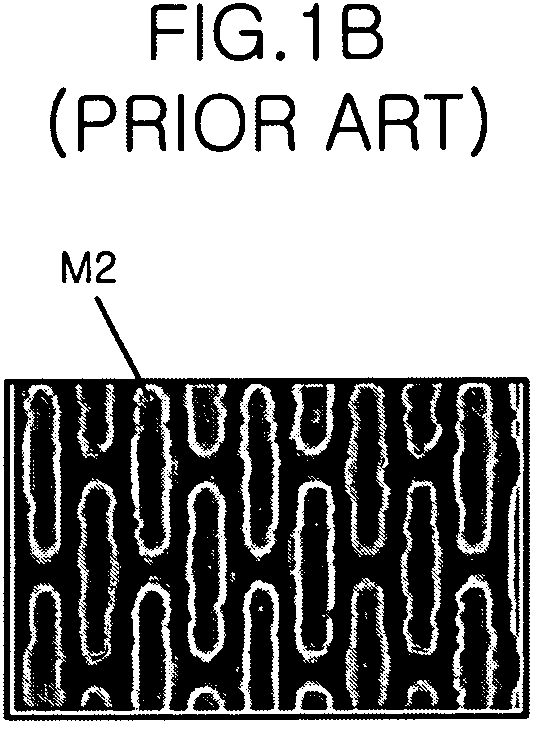Method for fabricating semiconductor device using amorphous carbon layer as sacrificial hard mask
a technology of amorphous carbon layer and a semiconductor device, which is applied in the direction of semiconductor/solid-state device manufacturing, electrical equipment, basic electric elements, etc., can solve the problems of time delay, difficult to develop a material for the arf photoresist, and difficult to obtain a pattern below the size of 0.1 m, so as to reduce the pattern deformation and increase the selectivity of the etching hard mask
- Summary
- Abstract
- Description
- Claims
- Application Information
AI Technical Summary
Benefits of technology
Problems solved by technology
Method used
Image
Examples
first embodiment
[0060]FIGS. 8A to 8F are cross-sectional views illustrating a method for forming a pattern in a semiconductor device through performing a F2 or ArF photolithography in accordance with the present invention.
[0061]Among various types of line-type patterns, the case of forming bit lines is exemplified in the first embodiment of the present invention. However, this embodied line-type pattern formation is also applicable to other various types of patterns for forming gate structures, storage node contacts, metal lines and so on.
[0062]Also, in addition to the line-type, an island type and a donut-shaped type as like the shape of a storage node contact can also be applicable. Furthermore, although the above line-type pattern is based on a conductive layer, an insulation layer can also be used. Additionally, the line-type pattern illustrated in the first embodiment is a positive pattern.
[0063]Referring to FIG. 8A, a conductive layer 61A is formed as an etch target layer on a substrate 60 pr...
fourth embodiment
[0088]In the fourth embodiment, the anti-reflective coating layer 65A uses SiON, which is an inorganic material, and the amorphous carbon layer 63A is disposed beneath the anti-reflective coating layer 65A. Also, the anti-reflective coating layer 65A is intended to provide the originally assigned functions and an additional function as a sacrificial hard mask. Thus, the anti-reflective coating layer 65A is formed in a thickness ranging from approximately 200 Å to approximately 1,000 Å to realize the etching process even with the thinly formed photoresist pattern 66A.
[0089]Also, the anti-reflective coating layer 65A and the sacrificial hard mask layer 64A can be substituted with a material selected from a group consisting of oxide, nitride, oxynitride and a combination thereof. The amorphous carbon layer 63A is formed in a thickness greater than at least approximately 1,000 Å, typically, greater than approximately 2,000 Å for the purpose of securing an intended level of etch selectiv...
fifth embodiment
[0090]FIGS. 12A to 12D are cross-sectional views illustrating a method for forming a pattern in a semiconductor device by employing a F2 or ArF photolithography process in accordance with the present invention.
[0091]In the fifth embodiment, the exemplified pattern is for forming a contact hole. More specifically, this contact hole pattern can be applicable to a metal line contact, a contact between one of a bit line and a storage node of a capacitor and an impurity junction such as a source / drain and a contact pad. Also, the contact hole pattern can be applicable to a process for forming a trench for device isolation in which an etch target is an insulation layer and to a process for etching an etch target based on a conductive material, e.g., a polysilicon layer, to open a channel region of a thin film transistor. That is, these pattern formation processes are negative type of patterns.
[0092]Referring to FIG. 12A, an insulation layer 101 is formed as an etch target layer on a subst...
PUM
| Property | Measurement | Unit |
|---|---|---|
| wavelength | aaaaa | aaaaa |
| wavelength | aaaaa | aaaaa |
| wavelength | aaaaa | aaaaa |
Abstract
Description
Claims
Application Information
 Login to View More
Login to View More - R&D
- Intellectual Property
- Life Sciences
- Materials
- Tech Scout
- Unparalleled Data Quality
- Higher Quality Content
- 60% Fewer Hallucinations
Browse by: Latest US Patents, China's latest patents, Technical Efficacy Thesaurus, Application Domain, Technology Topic, Popular Technical Reports.
© 2025 PatSnap. All rights reserved.Legal|Privacy policy|Modern Slavery Act Transparency Statement|Sitemap|About US| Contact US: help@patsnap.com



